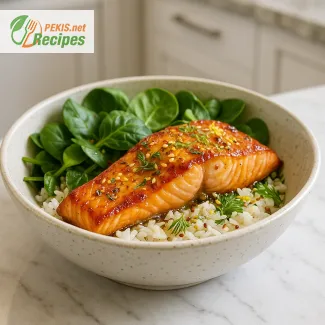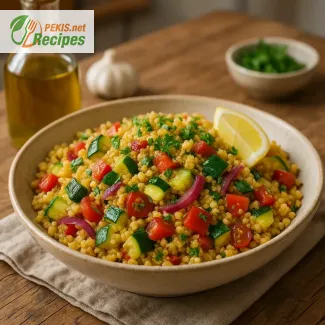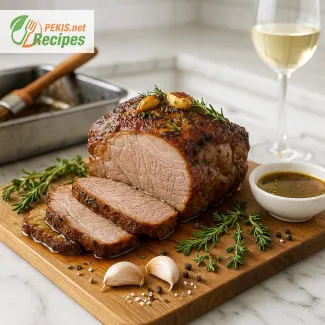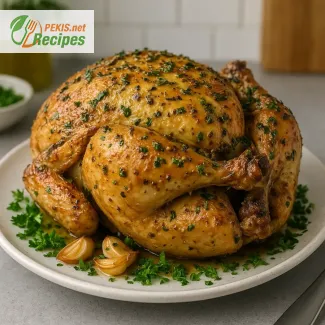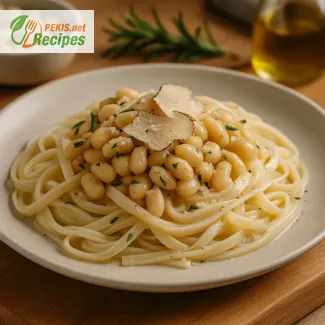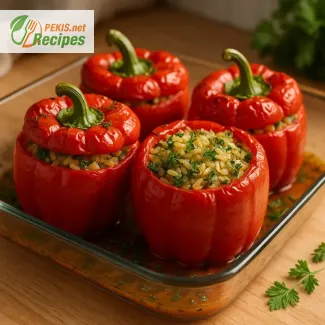
Flavorful rice-stuffed bell peppers packed with garden-fresh herbs
A comforting vegetarian dish that brings rustic charm to the dinner table
Few dishes combine rustic simplicity and fragrant freshness quite like stuffed bell peppers with rice and herbs. This timeless recipe celebrates the natural sweetness of roasted bell peppers filled with a savory blend of rice, fresh herbs, and gentle spices. Whether you're serving them as a main dish for a family dinner or presenting them as a colorful side at a gathering, herb-stuffed peppers offer a versatile, satisfying option that pleases both vegetarians and meat-eaters alike.
The appeal of traditional stuffed peppers with herbs
Stuffed peppers have a long-standing place in traditional cuisine across Mediterranean and Eastern European kitchens. The core idea—filling hollowed vegetables with grains, herbs, and other flavor-packed ingredients—is universal, but the variations are endless. What makes this particular version special is its balance of textures and taste: al dente rice, tender roasted peppers, and an aromatic medley of parsley, dill, thyme, and basil. The slow baking process not only deepens the flavor of the herbs but also melds everything into a cohesive, comforting whole.
Why bell peppers are ideal for baking
Bell peppers are one of the few vegetables that are naturally built for stuffing. Their sturdy walls hold up beautifully in the oven, allowing for a golden-brown exterior without collapsing or turning soggy. When roasted, their natural sugars caramelize, enhancing their inherent sweetness and providing a perfect contrast to the earthy filling inside. Red, yellow, and orange peppers tend to be slightly sweeter than green ones, making them a great choice for those seeking a richer flavor experience.
Rice: The heart of the filling
At the core of this recipe is fluffy, well-seasoned rice, often enhanced with a splash of olive oil, a pinch of sea salt, and slow-cooked aromatics like onions and garlic. Long-grain varieties such as basmati or jasmine rice work particularly well, offering lightness and separation in texture. For a nuttier finish, brown rice is an excellent option. The rice acts as a blank canvas, absorbing the flavor of the herbs and any broth or tomato sauce used in baking.
Elevating flavor with fresh herbs
Fresh herbs are the defining element of this dish. Chopped flat-leaf parsley adds brightness, while dill offers a soft, grassy note. A hint of thyme brings subtle warmth, and basil delivers a mild sweetness. The herbs aren’t just garnish—they’re an essential part of the filling, providing depth, aroma, and freshness. To ensure optimal flavor, always use fresh herbs chopped just before folding into the rice.
Versatility for different diets and occasions
While this recipe is naturally vegetarian, it can be easily adapted for other dietary preferences. Add feta cheese or mozzarella for a Mediterranean flair, or stir in chickpeas, lentils, or tofu for added protein. For meat lovers, incorporating minced turkey or ground beef creates a heartier version while still retaining the dish's core identity. These stuffed peppers are ideal for make-ahead meals, meal prep, or potluck dinners, reheating well and storing beautifully in the fridge or freezer.
Aromatic sauces and serving ideas
The classic herb and rice stuffing shines even more when paired with the right sauce. A drizzle of garlicky tomato sauce, a dollop of Greek yogurt, or a spoonful of herbed sour cream can elevate the dish with a rich, creamy element. For serving, a simple side of crusty bread or a green salad with lemon vinaigrette completes the meal without overpowering the peppers' delicate balance of flavors.
Choosing the best ingredients for maximum impact
To make the most of this recipe, select firm, glossy bell peppers of uniform size so they cook evenly. Use high-quality extra virgin olive oil and ensure the rice is not overcooked before stuffing. For herbs, prioritize fresh over dried to capture their full aromatic range. A touch of freshly cracked pepper, lemon zest, or smoked paprika can be added for extra character without complicating the preparation.
A timeless comfort dish with global roots
From Turkish dolmas to Italian peperoni ripieni, the concept of vegetable stuffing spans continents. This version focuses on plant-based simplicity with ingredients that are easy to source and prepare. It’s a celebration of nature’s flavors—nothing overprocessed or artificial, just wholesome components working in harmony. These rice and herb stuffed peppers bring warmth and color to any table and offer a dish that feels as comforting as it is nourishing.
1. Prepare the filling.
In a medium skillet, heat the olive oil (30 ml / 2 tbsp) over medium heat. Add chopped onions (100 g / 3.5 oz) and sauté for 5 minutes until translucent. Add minced garlic and cook for another minute until fragrant.
2. Cook the rice.
Add the uncooked long-grain rice (150 g / ¾ cup) to the pan and stir well to coat the grains in oil. Pour in the vegetable broth (350 ml / 1½ cups) and tomato paste (30 g / 2 tbsp). Bring to a boil, then reduce heat to low, cover, and let simmer for about 15 minutes until the liquid is absorbed and rice is tender. Remove from heat.
3. Add herbs and season.
Stir in chopped parsley, dill, thyme, basil, lemon zest, salt, black pepper, and chili flakes if using. Mix thoroughly and set aside to cool slightly.
4. Prepare the peppers.
Cut off the tops of the bell peppers (keep the tops for lids). Remove seeds and membranes. Lightly oil the outside of the peppers with a brush.
5. Fill and arrange.
Spoon the herbed rice mixture into each pepper, pressing down gently with the back of the spoon. Place the stuffed peppers upright in a lightly greased baking dish. Replace the tops if desired.
6. Bake.
Preheat oven to 180°C (356°F). Cover the dish loosely with aluminum foil and bake for 30 minutes. Remove foil and bake for an additional 15 minutes until the peppers are tender and slightly browned at the edges.
7. Serve.
Let rest for 5 minutes before serving. Optionally, garnish with extra herbs or a drizzle of olive oil.
Transform your stuffed peppers into a gourmet herbed delight
Small changes that elevate this comfort classic to an unforgettable dish
Even the most cherished traditional recipes have room for innovation—and rice-stuffed bell peppers with herbs are no exception. While the classic version is already satisfying and aromatic, a few thoughtful adjustments can enhance the flavor profile, texture, presentation, and nutritional value. With just a handful of strategic tweaks, this dish can evolve from a weeknight staple into a restaurant-worthy creation that dazzles on any table.
Choosing the right rice and understanding its impact
The type of rice used significantly affects the final texture and taste. While long-grain white rice is the standard, consider using aromatic varieties like jasmine or basmati for a floral undertone. For a healthier spin, swap in brown rice or wild rice to add a nutty depth and increase fiber content. Be aware that these varieties require longer cooking times and more liquid, so they should be pre-cooked before stuffing to avoid undercooked grains inside the pepper.
Enhance depth with cheese or protein
For added richness, mix in crumbled feta, goat cheese, or even a spoonful of ricotta to the rice and herb mixture. These cheeses introduce creamy, salty notes that contrast beautifully with the peppers’ natural sweetness. If you’re aiming for a more filling version, chickpeas, cooked lentils, or ground turkey make excellent additions that retain the spirit of the dish while offering a protein boost. Just ensure proteins are fully cooked before baking.
Add complexity with roasted vegetables
To increase the nutritional value and create a more complex mouthfeel, stir finely chopped roasted zucchini, eggplant, or carrot into the filling. These vegetables contribute a sweet, smoky flavor and improve moisture retention, preventing the rice from drying out during baking. Roasting the vegetables beforehand concentrates their flavor and eliminates excess water.
Boost the herbaceous aroma with infused oils
Instead of simply using fresh herbs, try preparing a herb-infused olive oil by gently heating the oil with sprigs of rosemary, oregano, or bay leaf for a few minutes before using. This technique intensifies the herbaceous character and distributes it more evenly throughout the dish. Drizzle a few drops over the peppers just before serving for added aroma and shine.
Tomato base or no tomato base?
Some versions of stuffed peppers are baked in a tomato sauce, which adds acidity and moisture. For a Mediterranean twist, consider layering crushed tomatoes, garlic, and a touch of cinnamon in the baking dish before placing the peppers. If you prefer a drier, more roasted finish, bake them without sauce and brush the peppers lightly with oil for a crispier skin.
Avoiding common mistakes for better results
One of the most frequent errors is undercooked rice or a filling that's too dry. To prevent this, make sure the rice is fully cooked but slightly al dente before stuffing and always allow it to rest for a few minutes to absorb remaining liquid. Another mistake is overfilling the peppers, which can cause the tops to crack. Leave a small margin at the top to allow for expansion. Also, remember to season the rice generously—salt and herbs must be mixed well to avoid bland bites.
Healthy swaps without sacrificing taste
Those watching their sodium intake can reduce the amount of salt by increasing the use of fresh lemon juice, zest, and herbs to add brightness. Instead of traditional rice, using cauliflower rice offers a low-carb alternative that still absorbs flavor. Replacing olive oil with avocado oil can add healthy fats and a subtle buttery flavor, while skipping cheese or using a plant-based alternative keeps the recipe fully vegan.
Why homemade always wins
Preparing this dish at home allows full control over ingredient quality, seasoning levels, and dietary needs. Store-bought or pre-stuffed peppers are often loaded with excess salt, preservatives, or low-quality fillers. Homemade versions allow you to choose organic produce, tailor herbs to your preference, and enjoy the therapeutic process of stuffing and roasting each pepper. The aroma filling the kitchen is a reward in itself.
Make it your own with global flavor influences
Add a dash of cumin and coriander for a Middle Eastern take, stir in capers and sun-dried tomatoes for an Italian vibe, or sprinkle with smoked paprika for a Spanish kick. Each of these spices shifts the tone of the dish while preserving its comforting structure. This flexibility makes stuffed bell peppers a canvas for creativity, allowing you to match the flavor profile with seasonal herbs or pantry ingredients.
Allergens present in the recipe:
- None of the major allergens (contains no dairy, eggs, gluten, nuts, or soy)
- Gluten: Not present (gluten-free)
Allergen replacement suggestions:
- If using store-bought broth, verify it is certified gluten-free
- For added protein, consider adding chickpeas or tofu (verify soy-free if needed)
Vitamins and minerals per serving (approximate):
- Vitamin C: 130 mg – boosts immune system and antioxidant defense
- Vitamin A: 1600 IU – supports vision and skin health
- Folate: 85 mcg – essential for red blood cell production
- Potassium: 550 mg – regulates fluid balance and muscle function
- Magnesium: 45 mg – supports muscle and nerve function
- Iron: 2.2 mg – important for oxygen transport
Antioxidants per serving (approximate):
- Beta-carotene: 2.5 mg – protects cells and supports eye health
- Lutein & Zeaxanthin: 1.8 mg – promotes visual acuity
- Quercetin: 10 mg – anti-inflammatory and immune support
- Lycopene (from tomato paste): 5 mg – supports heart and skin health
- Flavonoids (from herbs): ~20 mg – cellular protection and detoxification
